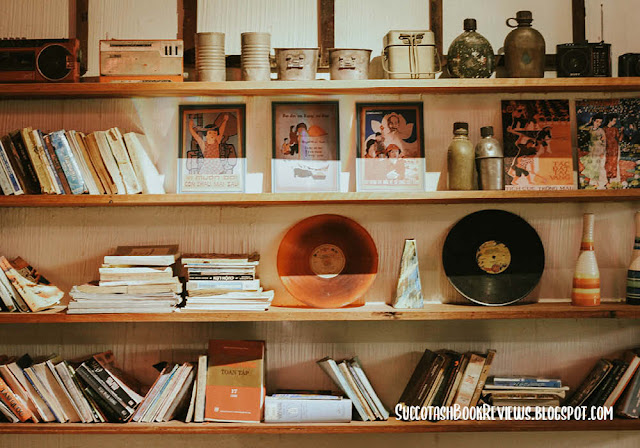Assistive Technology and Libraries: Assistive Technology for the Visually Impaired
This article is a series on assistive technology in the library that I did for a college assignment for a Library and Information Technology Certificate. It's good information, so I'm publishing here on my book blog.
The American Library Association describes assistive technologies as “electronic solutions that enable people with disabilities to live independently.” (ALA, 2015). These assistive technologies help adults with vision loss in many ways, from reading what’s on a computer screen to translating a text document to a Braille one.
Vision loss is a broad term and doesn’t just mean that a person is blind. The American Foundation for the Blind defines a person with vision loss as anyone who has trouble seeing while glasses or contacts to those who cannot see at all. It is estimated that over 26 million American adults currently experience vision loss (AFB, 2019). With so many individuals experiencing different levels of vision loss, the need for assistive technology becomes very important.
Blind and visually impaired patrons at public libraries have many options to help them research, print documents, and read articles. With a library card, they can have access to books and periodicals and have those documents read to them there, or print off to read at home.
There are many technology tools that visually impaired library patrons can find at a library. Here is a little more about three important and popular visually assistive technology tools, along with how visually impaired individuals and those with vision loss use them.
Sources:
Assistive technology: What you need to know library (n.d.). In Association of Specialized, Government and Cooperative Library Agencies. Retrieved from http://www.ala.org/asgcla/resources/tipsheets/assistive-technology
Facts and figures on adults with vision loss (2019, March). In American Foundation for the Blind. Retrieved from https://www.afb.org/research-and-initiatives/statistics/adults
JAWS(R) (n.d.). In Freedom Scientific. Retrieved from https://www.freedomscientific.com/products/software/jaws/
What is braille? (n.d.). In Braille Works. Retrieved from https://brailleworks.com/braille-resources/what-is-braille/
Enjoy,
Renee Shelton
Succotash Reviews
:)
------------------------------------
Renee Shelton - Sand and Succotash Blog
Twitter: @121degreesC
The American Library Association describes assistive technologies as “electronic solutions that enable people with disabilities to live independently.” (ALA, 2015). These assistive technologies help adults with vision loss in many ways, from reading what’s on a computer screen to translating a text document to a Braille one.
What is Vision Loss?
Vision loss is a broad term and doesn’t just mean that a person is blind. The American Foundation for the Blind defines a person with vision loss as anyone who has trouble seeing while glasses or contacts to those who cannot see at all. It is estimated that over 26 million American adults currently experience vision loss (AFB, 2019). With so many individuals experiencing different levels of vision loss, the need for assistive technology becomes very important.
Public Libraries and Assistive Technologies
Blind and visually impaired patrons at public libraries have many options to help them research, print documents, and read articles. With a library card, they can have access to books and periodicals and have those documents read to them there, or print off to read at home.
There are many technology tools that visually impaired library patrons can find at a library. Here is a little more about three important and popular visually assistive technology tools, along with how visually impaired individuals and those with vision loss use them.
JAWS Screen Readers
JAWS stands for Job Access With Speech, and is a screen reader. A screen reader allows a person to hear what a webpage displays on a screen. Licenses for JAWS can be purchased for home or professional use, but through public libraries, a user can use the software for free. A screen reader reads the headings, the paragraph text, and if the images on a web pages has alternate text it will read those, too.ZoomText Keyboards and Magnifier Software
ZoomText does what its name says: it provides a way to make text larger on the computer screen making it easier for the visually impaired to read the screen. The text can be zoomed in and out, the background can be changed to make the text stand out better, and the curser can be made larger and in different colors to track it easier on the screen. All tools that make reading a screen much easier.Braille Printer
Braille is system of raised dots arranged in a rectangle, with two rows of three dots. Those combination of six dots or spaces and dots create letters, contractions, and punctuation that create a touchable text to read with the fingers. A Braille printer translates text into Braille dots, turning whatever is inputted into the printer into a document that can be read in Braille. The dots are embossed on the paper, and this printer is also called Braille embosser.Sources:
Assistive technology: What you need to know library (n.d.). In Association of Specialized, Government and Cooperative Library Agencies. Retrieved from http://www.ala.org/asgcla/resources/tipsheets/assistive-technology
Facts and figures on adults with vision loss (2019, March). In American Foundation for the Blind. Retrieved from https://www.afb.org/research-and-initiatives/statistics/adults
JAWS(R) (n.d.). In Freedom Scientific. Retrieved from https://www.freedomscientific.com/products/software/jaws/
What is braille? (n.d.). In Braille Works. Retrieved from https://brailleworks.com/braille-resources/what-is-braille/
Enjoy,
Renee Shelton
Succotash Reviews
:)
------------------------------------
Renee Shelton - Sand and Succotash Blog
Twitter: @121degreesC


Comments
Post a Comment
Thank you for you input!